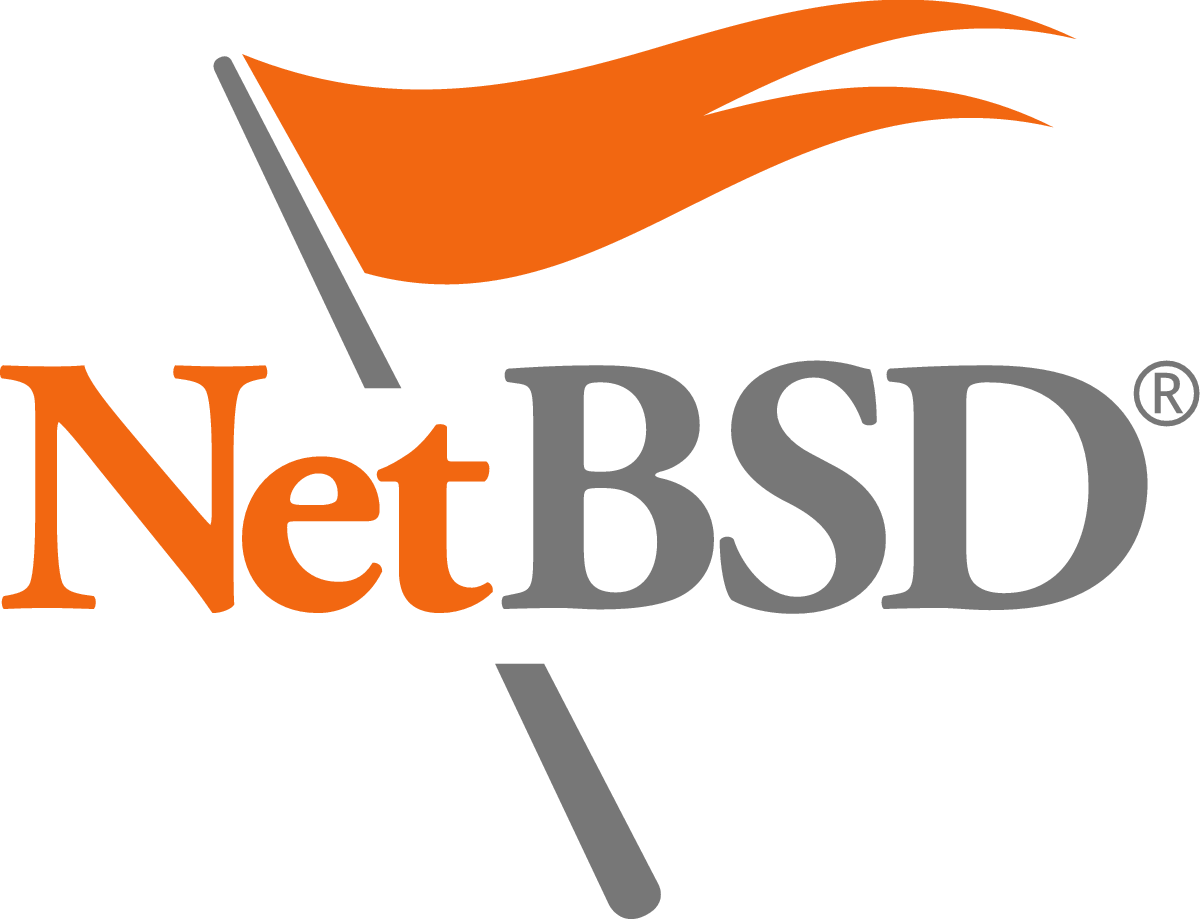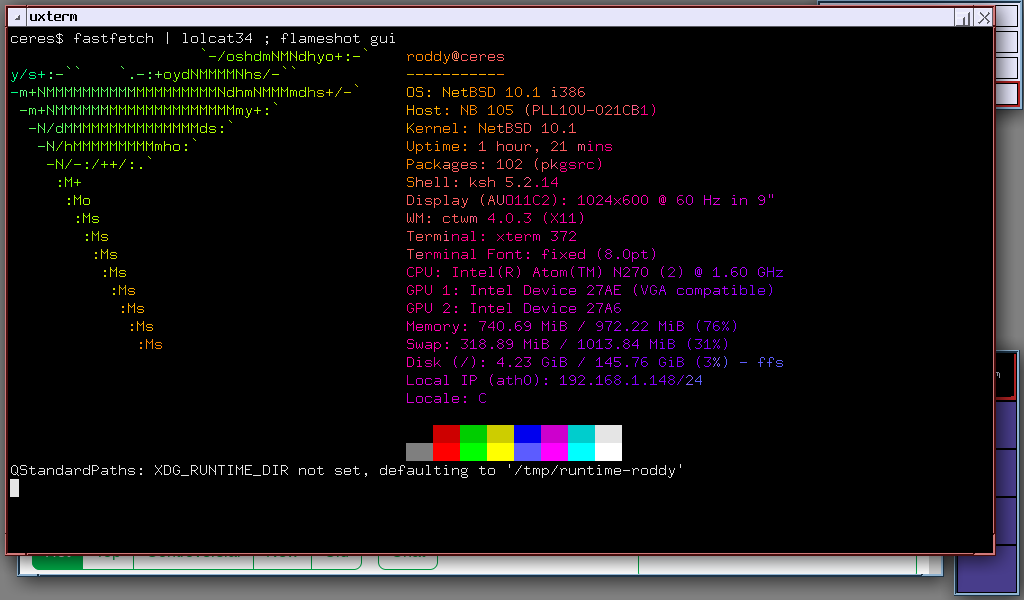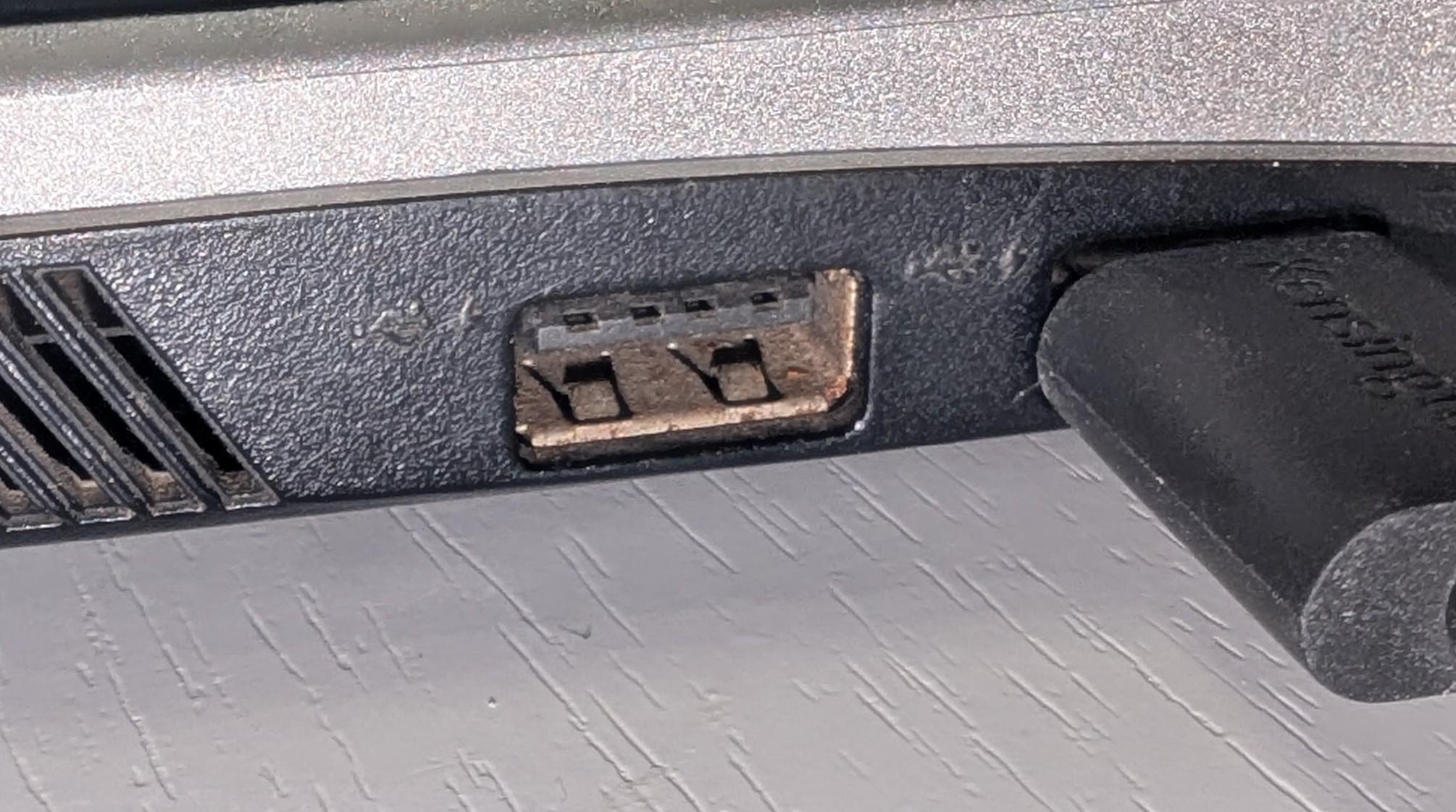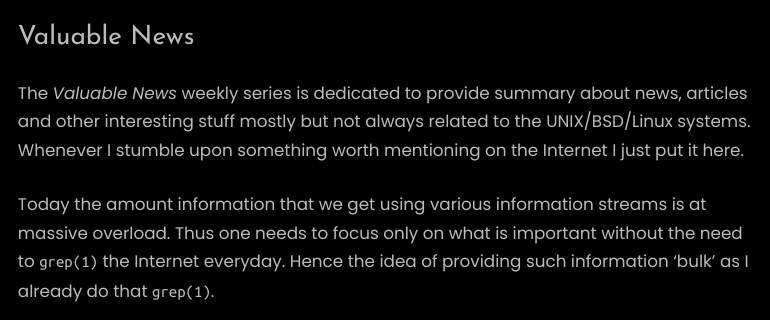Search results for tag #netbsd
 boosted
boostedI like #NetBSD so far. Even despite my stupid mistakes with pkgsrc. And not only because THERE IS TETRIS BUNDLED
 boosted
boostedYou learn a lot by breaking things... pkgsrc included. And bundled Tetris is a serious feature.
The #NetBSD 🚩community is amazing! 🔥
Let's come together to reach the foundation's $50,000 year-end goal. Your contribution directly drives the project's future and innovation. Every donation helps!
https://netbsd.org/donations/
#NetBSD #OpenSource #FOSS #Donate
#outreach
https://social.mikutter.hachune.net/@tsutsuii/115628842301787423
My go-to is #WindowMaker though. Or, on super low end devices (486), ctwm (default in #NetBSD and #OpenBSD I think.
@thomholwerda @hp @CursedSilicon Even if ssh for HP is old, one can still use a modern system as a jumphost using ssh -J.
A Raspberry Pi or something similarly small / low power can run a modern OS (like #NetBSD), and you can offer key-based ssh to it, and allow ssh access from it to your HP. That’s one hopefully simple possibility.
 boosted
boostedI investigated some #NetBSD/i386 bulk build failures for Go packages. They all failed with the same error, which is sus. Reported it as https://github.com/golang/go/issues/76815, and it turned out to be an actual linker bug that was fixed today! 🤩
#NetBSD 10.1 was released on December 16 2024 - exactly one year ago.
Not a bad anniversary. Post your favorite stories and/or functionalities of NetBSD in the replies, I am curious to see who is using it and for what... 
Latest 𝗩𝗮𝗹𝘂𝗮𝗯𝗹𝗲 𝗡𝗲𝘄𝘀 - 𝟮𝟬𝟮𝟱/𝟭𝟮/𝟭𝟱 (Valuable News - 2025/12/15) available.
https://vermaden.wordpress.com/2025/12/15/valuable-news-2025-12-15/
Past releases: https://vermaden.wordpress.com/news/
#verblog #vernews #news #bsd #freebsd #openbsd #netbsd #linux #unix #zfs #opnsense #ghostbsd #solaris #vermadenday
 boosted
boostedI understand the strain on maintainers, but it's still sad to see #FreeBSD culling so many 32bit packages. #OpenBSD suffers from the same problem. It seems #NetBSD will remain the platform where you can still e.g. get a working web browser for a legacy system (#Arcticfox). Same applies to the Linux world.
Hard to show with a screenshot, but the GameCube controller does work with games that use SDL2 for joystick access on #NetBSD Wii.
Added support for GameCube controllers on #NetBSD Wii. A new driver exposes the four GameCube controller sockets as HID devices that work with SDL / SDL2 as joystick devices.
So, I found this netbook and decided to fix it.
First step was easy: I tested NetBSD on it. (because it's a netbook, you see? 😜)
But the unit is in a sorry state. A USB port is so rusty that it doesn't work. I left the battery in a recycling point of my city because it was not safe to handle. Lots of keys from the keyboard doesn't work at all, etc, etc.
Let's see if I can find good parts for it. If you know where I can purchase parts for a Toshiba NB105 (NB100 series) in Spain or the EU, please let me know.
Latest 𝗩𝗮𝗹𝘂𝗮𝗯𝗹𝗲 𝗡𝗲𝘄𝘀 - 𝟮𝟬𝟮𝟱/𝟭𝟮/𝟬𝟭 (Valuable News - 2025/12/01) available.
https://vermaden.wordpress.com/2025/12/01/valuable-news-2025-12-01/
Past releases: https://vermaden.wordpress.com/news/
#verblog #vernews #news #bsd #freebsd #openbsd #netbsd #linux #unix #zfs #opnsense #ghostbsd #solaris #vermadenday


![[?]](https://zia.io/media/c7d30b21a674a70256affdc92d62b3c664a56e41b422a6fa74796f9af4cc391c.png)
![[?]](https://pleroma.anduin.net/media/e42775318fd38a77b2c02300192e27e61861443424849feef9767918512fac8b.png?name=blob.png)








